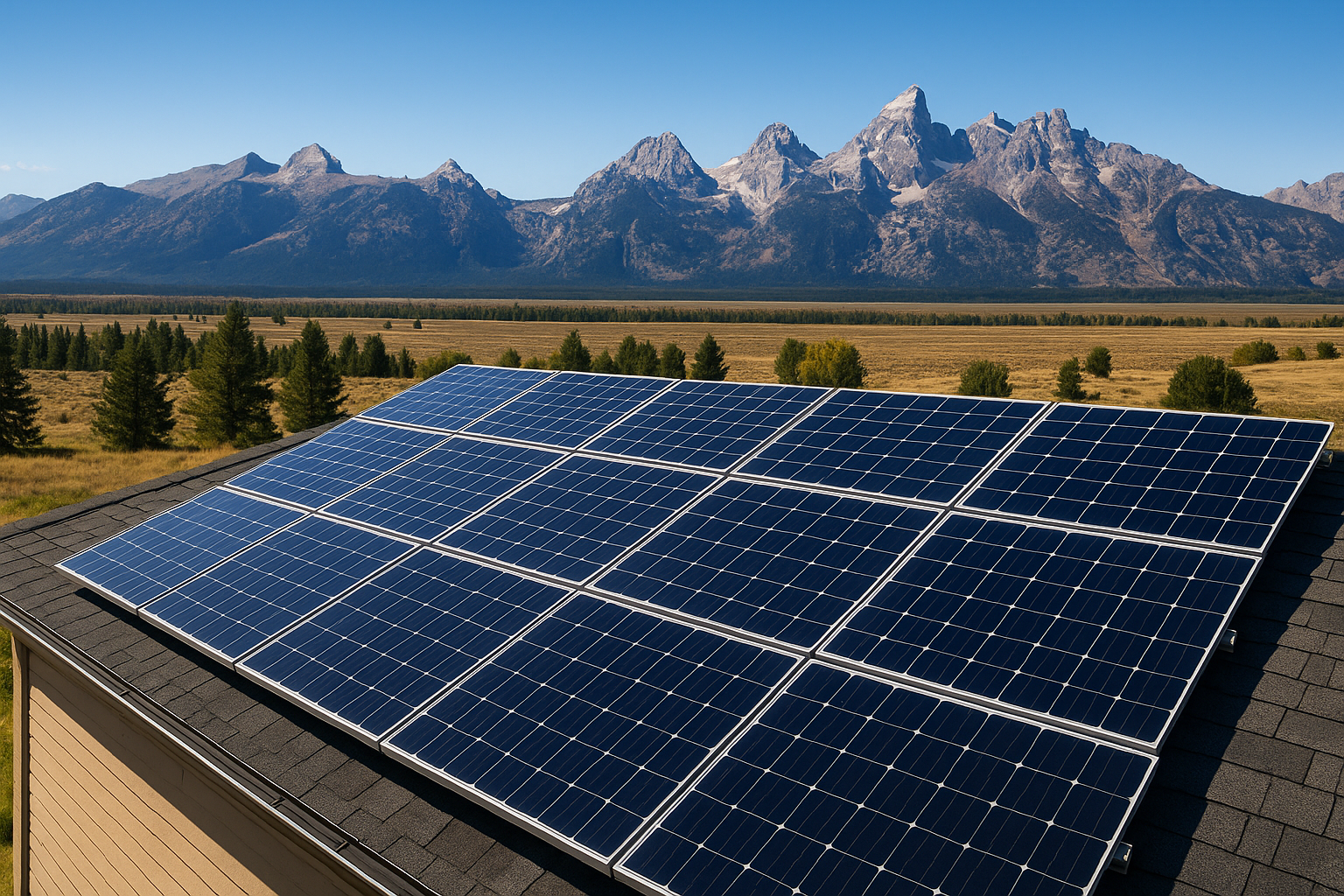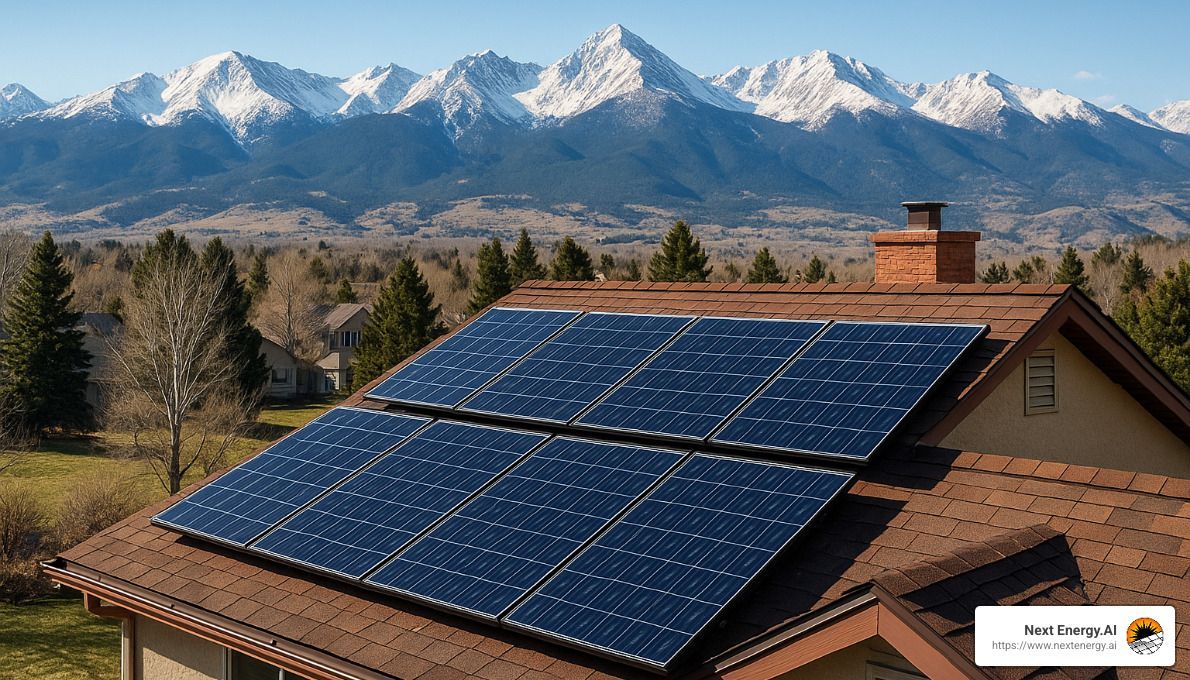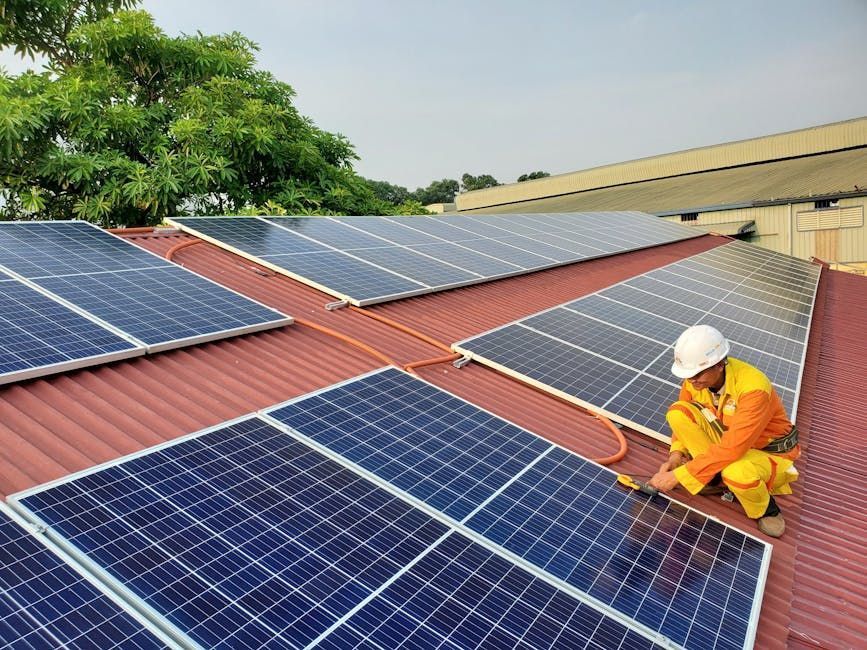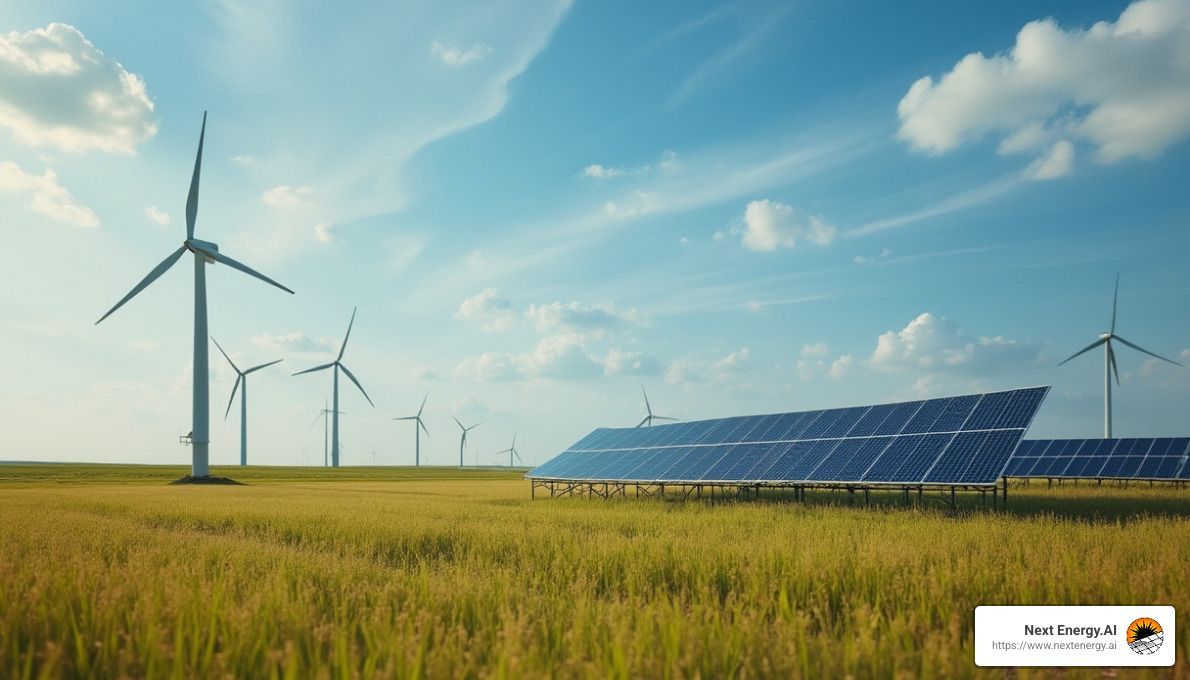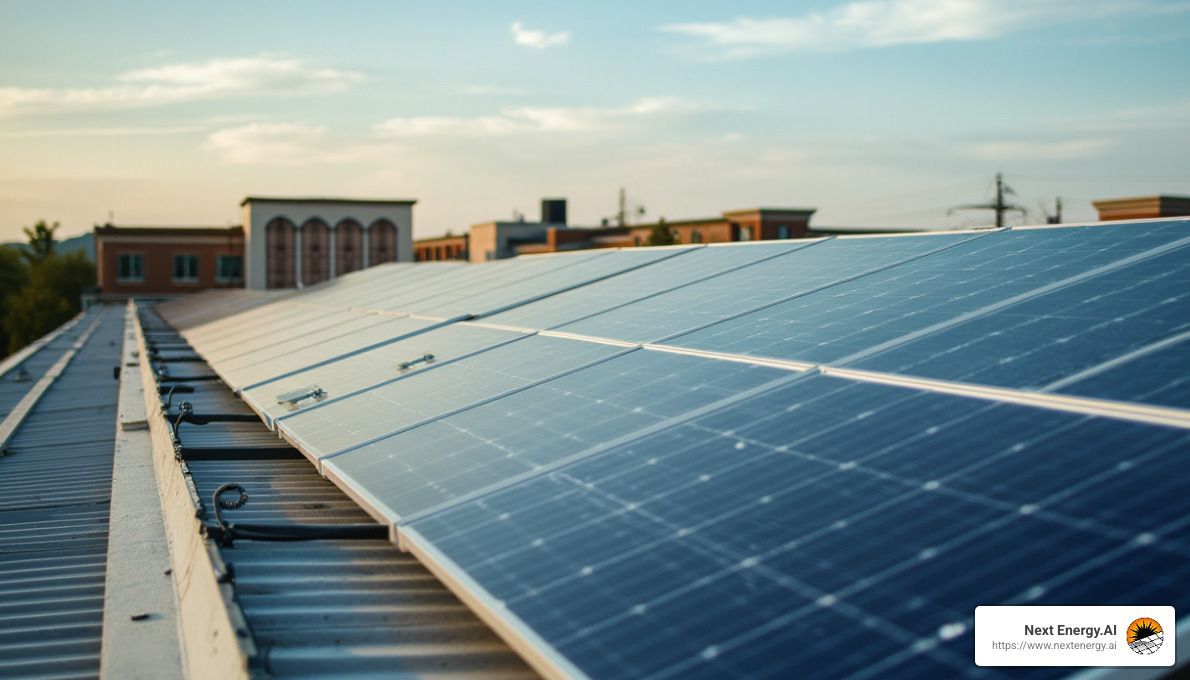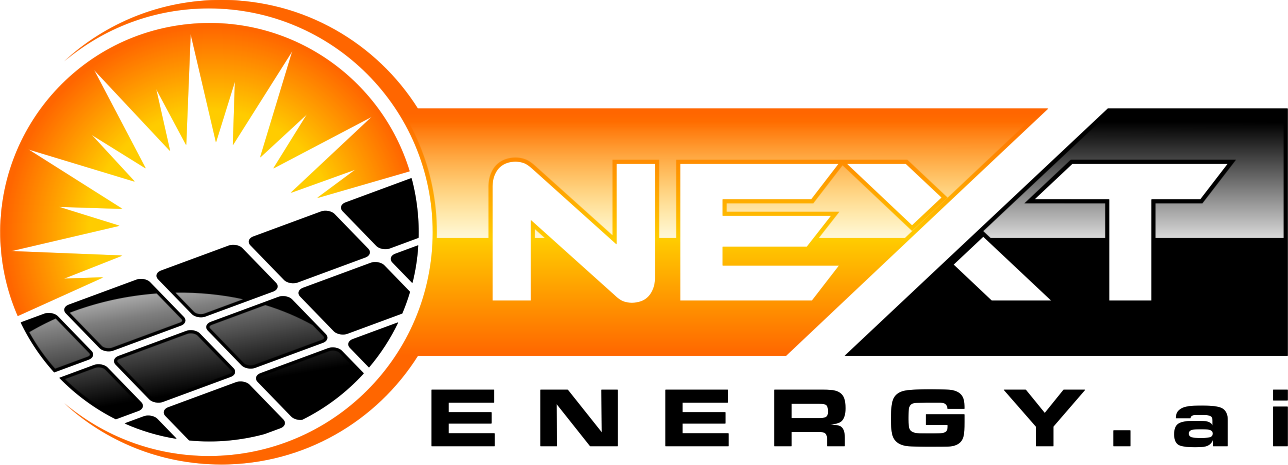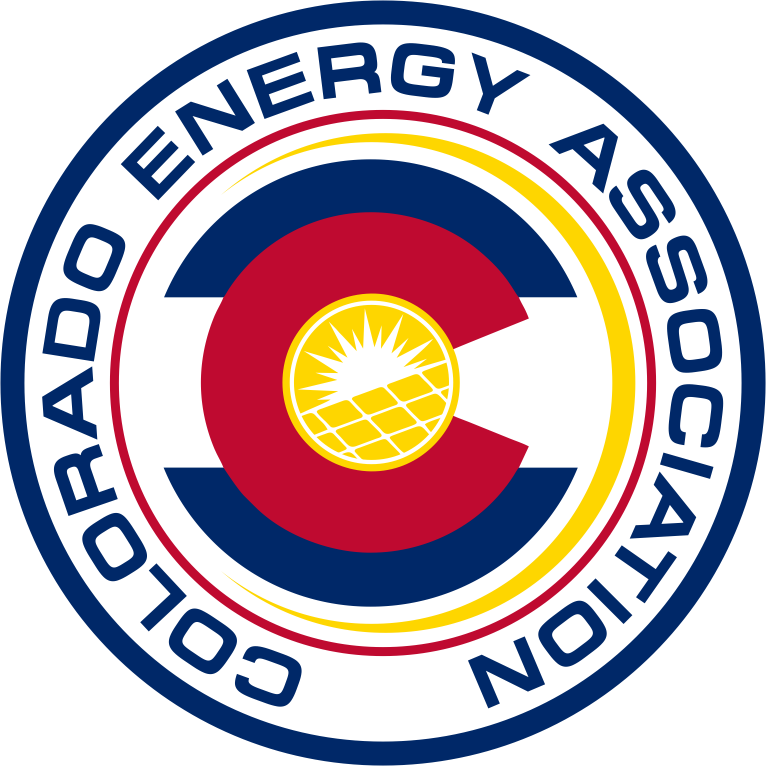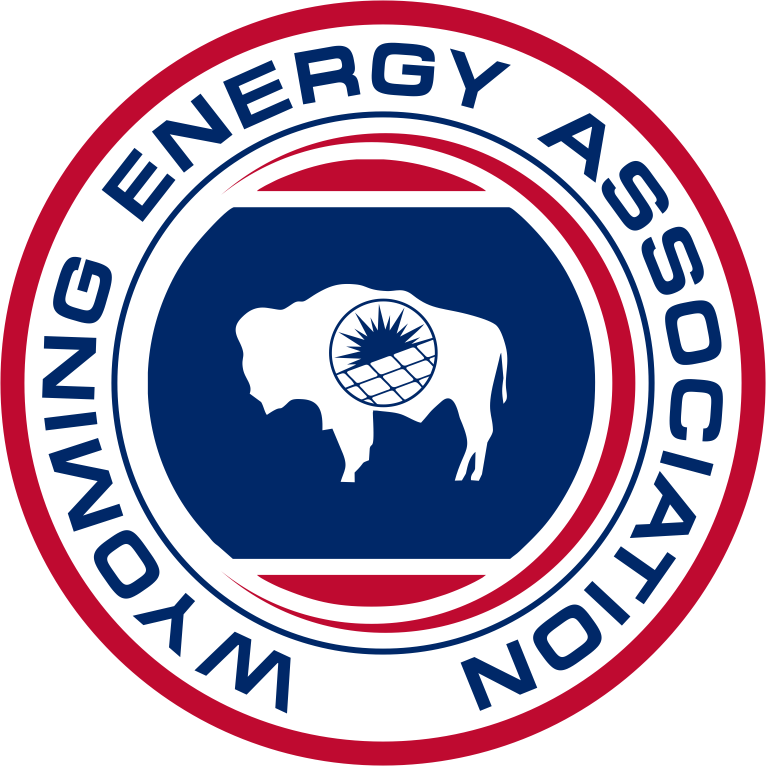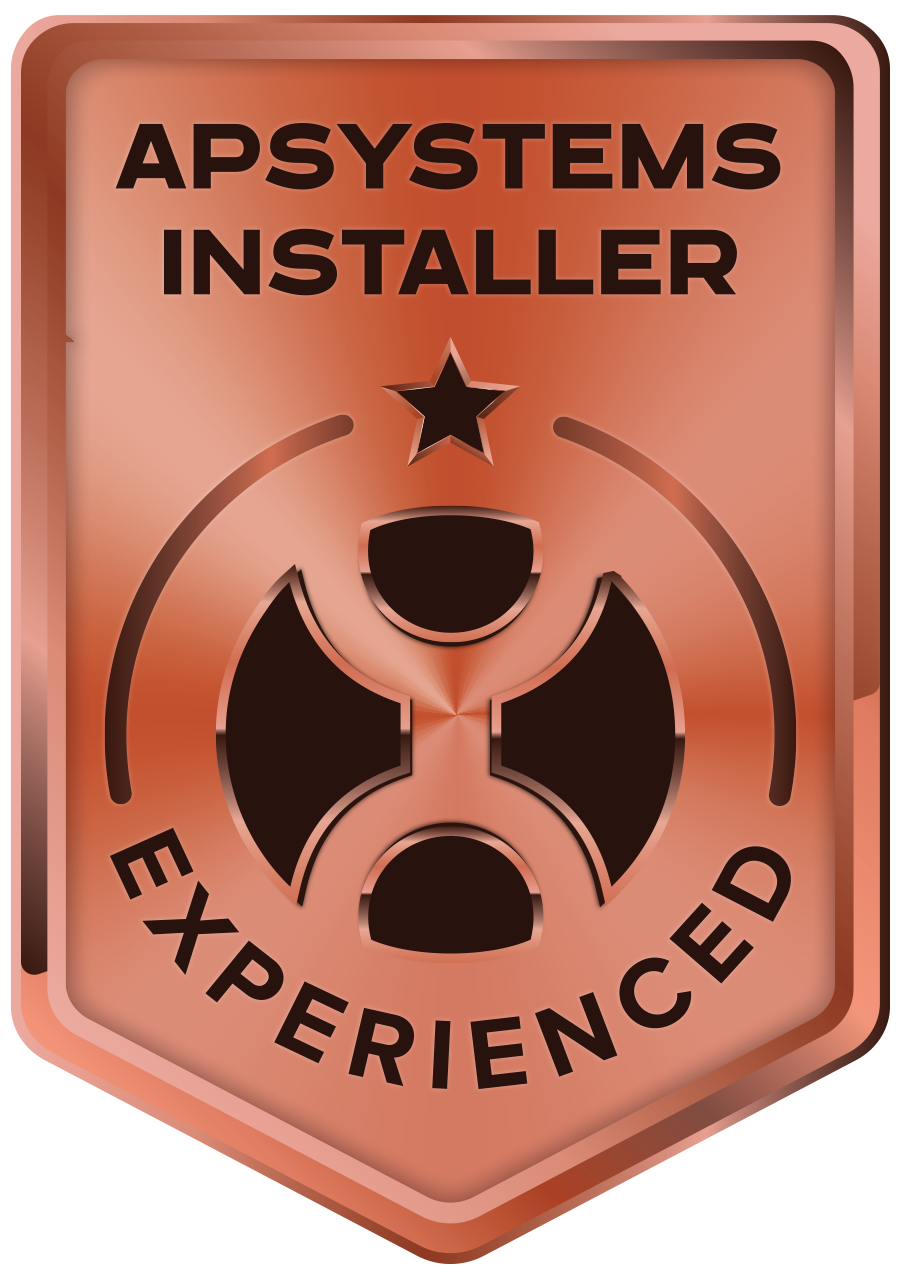Solar System Success: Operation and Maintenance Guide
Operation and maintenance of solar electric systems keeps your solar investment performing efficiently and safely. In simple terms, proper O&M involves:
- Regular Cleaning: Keeps panels clear of dirt, dust, and debris.
- Routine Inspections: Identifies issues early to prevent costly repairs.
- Performance Monitoring: Tracks your system's power output to ensure optimal performance.
- Inverter Checks: Monitors your inverter, which is the most common point of failure.
When your solar system is well-maintained, you can expect boosts in energy production (around 15%) and an extended lifespan for your investment.
I'm Spencer Gordon, CEO of NextEnergy.ai in Fort Collins. My experience in renewable energy systems has included extensive hands-on expertise in the operation and maintenance of solar electric systems, backed by NAPCEP certification and local leadership in solar solutions.
Here's a quick visual overview to help show you what effective operation and maintenance looks like in practice:

Understanding Solar Electric Systems
Before we roll up our sleeves and dive into the operation and maintenance of solar electric systems, let's first get comfortable with the basics. Think of a solar electric system as a well-tuned orchestra—each component has its own unique role and maintenance needs to keep the music (or in this case, energy) flowing smoothly.
At the heart of every solar system are the PV modules, better known as solar panels. These are the shiny, sun-loving heroes you see on roofs and ground mounts. Their job is simple yet remarkable—they soak up sunlight and convert it directly into usable electricity. However, even superheroes need upkeep! Panels require regular cleaning to keep dirt, dust, pollen, and bird droppings from cramping their style and lowering efficiency.
Next, we have the trusty inverters. These hardworking gadgets transform the direct current (DC) electricity produced by your panels into alternating current (AC), the type of electricity your home or business uses. Unfortunately, they often bear the brunt of the workload and are the most common source of system downtime. With a typical lifespan of around 10-15 years (compared to 25+ years for panels), you can generally expect to replace your inverter at least once during your solar system's lifetime.
Think of mounting systems and racking as the unsung heroes that securely hold everything in place. While they’re built tough, regular inspections are essential—especially after harsh weather like strong winds or heavy snowfalls—to ensure everything remains sturdy and safe.
Then there’s the hidden network of wiring and electrical components. They're not flashy, but they're crucial. Over time, the natural expansion and contraction due to changing temperatures (known as thermal cycling) can loosen connections. Regular checks can catch these issues early, keeping your system safe and efficient.
If your solar system includes energy storage (hello, backup power!), you'll have batteries as part of your setup. Batteries come in different flavors, each with their own maintenance requirements. Flooded lead-acid batteries, for example, need regular water-level checks. Lithium-ion batteries, on the other hand, are more low-maintenance but still benefit from regular monitoring to keep them performing at their best.
Finally, a well-rounded solar electric system includes monitoring systems. These handy tools track your system’s performance in real-time, alerting you to potential issues before they become bigger headaches. They’re like an early-warning system, keeping an eye on things so you don’t have to.
Here's a helpful visual to illustrate exactly how all these components work together and how energy flows from sunlight through your system and into your home or business:
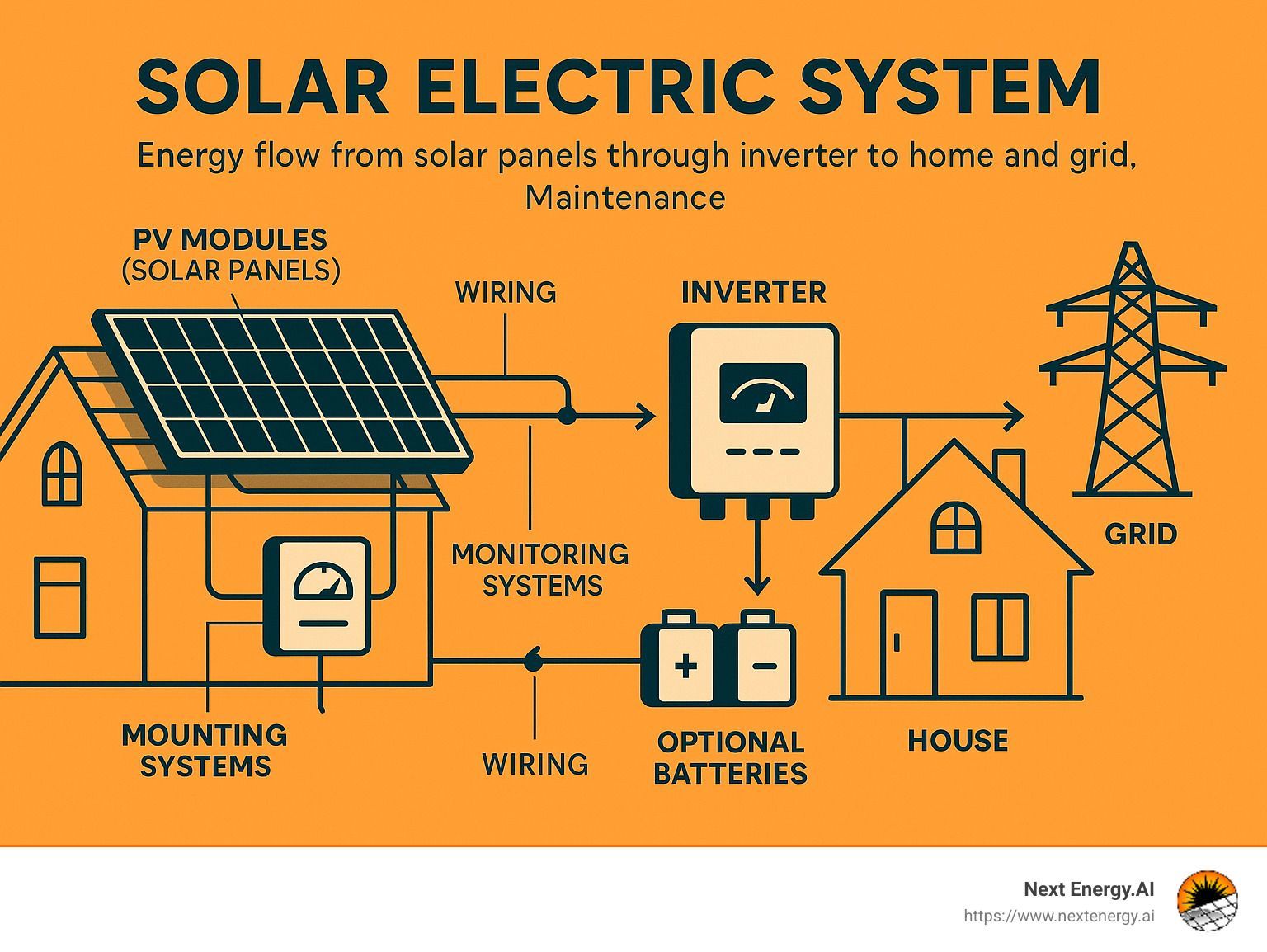
When you understand how each part functions—and what kind of TLC they need—you’re well on your way toward ensuring your operation and maintenance of solar electric systems keeps things humming along smoothly. Plus, knowing what to expect can save you time, money, and maybe even a few gray hairs down the road.
Operation and Maintenance of Solar Electric Systems
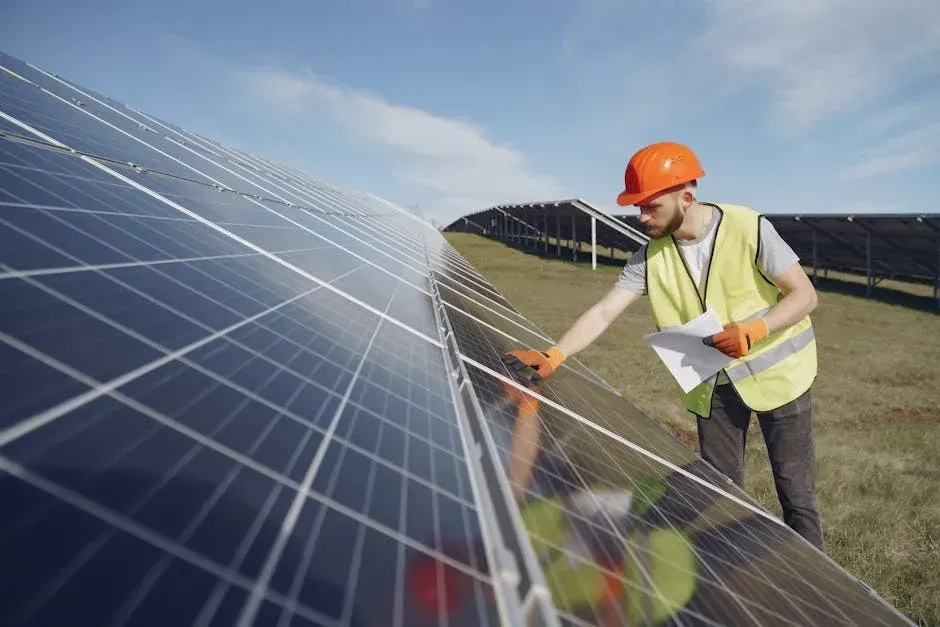
Once your solar system is up and running, keeping it healthy and efficient is key. At Next Energy.AI, we approach the operation and maintenance of solar electric systems with three main strategies: preventive, corrective, and condition-based maintenance. Each one serves a different purpose, but together they ensure your solar investment continues to perform at its best year after year.
As industry expert Saadat Ullah, Technical Portfolio Manager, puts it, "As an O&M contractor, we offer unrivalled performance. Our asset's performance continues to exceed expectations through exceptional service from technical experts." (We couldn't have said it better ourselves, Saadat!)
Preventive Maintenance in the Operation and Maintenance of Solar Electric Systems
Preventive maintenance is all about staying ahead of potential problems. Think of it like regularly changing the oil in your car—it helps things run smoothly and prevents bigger issues down the line.
At Next Energy.AI, we recommend routine cleaning as a key preventive step. Generally, solar panels should be cleaned at least twice per year, but in dustier environments (like many areas here in Northern Colorado and Southern Wyoming), panels might need a bit more attention. As one industry pro likes to joke, "All you really need to do is clean them occasionally with a gentle cleaner and make sure they're screwed down tight enough that they don't take off in the wind."
Regular visual inspections are also important. Checking for obvious physical damage like cracks, discoloration, or loose mounting hardware is a must. We also look out for signs of water damage, corrosion, wires dangling where they shouldn't be, or vegetation growing up to shade the panels.
Don't forget the electrical checks and inverter maintenance, either. Ensuring connections are secure and corrosion-free, checking inverter error codes, cleaning air filters and vents, and making sure the inverter has good airflow helps prevent unexpected downtime. For more specifics on preventive maintenance tasks, check out our guide on Maintaining Solar Panels.
Overall, bi-annual inspections are typically sufficient for most residential systems we support, though we always adjust schedules based on local environmental factors and system specifics.
Corrective Maintenance in the Operation and Maintenance of Solar Electric Systems
Even with diligent preventive care, things can sometimes go sideways. That's where corrective maintenance steps in—fixing issues once they occur.
Inverters are often the main culprit for downtime. They generally last 10-15 years, shorter than solar panels themselves, and frequently require replacement at least once over your system's lifespan. So, when an inverter fails, prompt action is critical to minimize lost energy production.
Solar panel replacements, although rare (panels only have around a 0.2% annual failure rate), can occasionally be necessary due to weather damage, manufacturing defects, or other issues.
Another common corrective task is wiring repairs. Sometimes animals, weather, or simple wear-and-tear can damage wires, requiring attention. Connections also tend to loosen over time due to thermal cycling—meaning periodic tightening might be needed.
It's always a good idea to document any corrective maintenance performed. Keeping track of repairs helps with warranties, future troubleshooting, and overall system management.
Condition-Based Maintenance Strategies
The newest—and arguably smartest—approach to solar maintenance is condition-based maintenance. Instead of relying entirely on set schedules, this method uses real-time data and analytics to pinpoint exactly when attention is needed.
Condition-based maintenance starts with continuous monitoring. Advanced monitoring platforms (like the ones we use at Next Energy.AI) constantly track your system's performance metrics. When something starts to go off track—even if it's subtle—we're alerted right away.
From there, data analytics and predictive maintenance kick in. By applying artificial intelligence and machine learning, our systems analyze data patterns and identify early signs of trouble. This allows us to predict when a part might fail and proactively address issues before they cause major headaches.
Our AI-improved monitoring makes this approach possible and delivers big benefits—fewer surprises, less downtime, and more consistent energy production. If you're interested in diving deeper into how maintenance costs and strategies are modeled in the industry, check out this detailed resource on the Model of Operation-and-Maintenance Costs for Photovoltaic Systems.
In short, keeping your solar system healthy is a proactive, ongoing process. But don't worry—with the right preventive, corrective, and condition-based maintenance strategies, you'll have your system humming happily under the sun for many years to come.
Common Causes of System Downtime
Let's be honest: Even the most well-maintained solar electric system might occasionally experience downtime. The good news? Knowing the usual suspects can help you spot trouble early and address it quickly.
At the top of that list—no surprise here—is the inverter. As industry experts often say:
"Inverters are the main cause of system downtime in any PV system."
Inverters handle a pretty hefty job. They convert DC electricity from your solar panels to usable AC power for your home or business. Plus, they constantly monitor the grid and optimize energy production. With all this multitasking, it's not surprising that they're more prone to issues than other components. Common inverter problems include overheating, internal component failures, and software glitches.
But aside from inverters, other sneaky troublemakers can cause downtime in your system, too.
Unexpected shading issues can pop up over time. Maybe your neighbor's tree grew taller, or there's new construction nearby. Even small shadows can significantly lower your energy output if they're overlooked.
Then there's soiling—a fancy term for plain old grime. Dust, pollen, bird droppings, leaves—you name it—can build up and reduce your solar panel's efficiency by as much as 15%. Regular cleaning takes care of this easily, but neglect it and your panels won't thank you.
Don't underestimate the importance of your system's wiring, either. Loose connections, damaged wires, and corroded terminals can cause intermittent performance dips or even total system shutdowns. Regular inspections and maintenance can easily catch these before they become serious problems.
Colorado and Wyoming weather isn't always the kindest, right? Severe storms, hail, lightning strikes, and heavy snow can all lead to weather-related damage. Proper mounting and regular checks after storms help keep your investment protected.
Even solar panels themselves, though durable, can face issues like module degradation. Normally, solar panels degrade very slowly—just 0.25% to 0.75% per year. But manufacturing defects or harsh environmental conditions can speed this up, leading to premature performance loss.
Lastly, if your system is grid-tied, grid-related issues like utility outages or fluctuations can temporarily shut down your solar system, too.
By understanding these common causes of downtime, you'll be better equipped to keep your solar electric system running smoothly and efficiently. Regular and thorough operation and maintenance of solar electric systems will help you avoid most of these hassles—and if anything does happen, you'll know exactly where to look first.
Monitoring the Performance and Health of Solar Installations
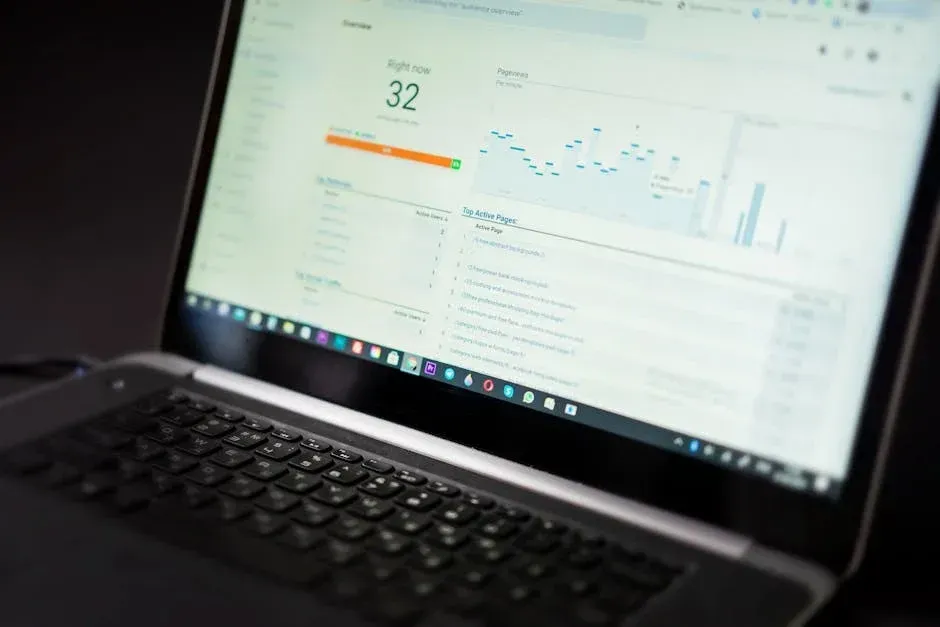
Keeping a close eye on your solar system is just as important as regular maintenance. Think about it—your solar panels might look perfect from the outside, but how do you know they're actually doing their job well? That's where effective monitoring comes in.
Modern solar monitoring systems give you real-time insights into your energy production, consumption, and overall system health. They track exactly how much power your solar panels generate and help you measure your system's performance ratio, meaning they compare actual energy output against what's expected based on sunlight conditions.
But that's just the start. Good monitoring doesn't just show you what's happening—it helps you spot problems early. These systems include built-in fault detection, alerting you whenever a component isn't performing as it should. By comparing current data to historical trends, monitoring platforms can spot gradual performance declines or subtle issues before they become major headaches.
Most modern inverters now come equipped with built-in monitoring features you can access from anywhere through an online portal or smartphone app. They'll even send you automatic notifications if energy production drops unexpectedly or if a potential fault is detected. Pretty handy, right?
Role of Monitoring Systems in Proactive Maintenance
When it comes to proactively managing the operation and maintenance of solar electric systems, monitoring systems are truly the "unsung heroes." They're constantly working behind the scenes, quietly keeping watch over your investment.
By providing early fault detection, monitoring systems allow you to catch issues well before they become noticeable through visual inspections alone. Let's say your panels gradually start producing less power over several weeks. A good monitoring system will notice this subtle change and send you an alert immediately. Without monitoring, you might only find the issue months later—after you've already lost significant energy production.
Advanced platforms, like those we offer at Next Energy.AI, use powerful algorithms to analyze your system's data. This enables effective pattern recognition, spotting unusual patterns that might indicate looming problems. These tools offer remote diagnostics, meaning many issues can be identified and even solved remotely—often without needing to send a technician to your location. (Though, we promise, our technicians are lovely people!)
Finally, effective monitoring helps optimize your solar system’s performance. By analyzing your energy production data, we can recommend small tweaks or upgrades that improve overall efficiency. It's like having your own personal solar coach, cheering your system on to peak performance.
At Next Energy.AI, we've taken solar monitoring a step further with our AI-improved monitoring solutions. We use advanced artificial intelligence to deliver predictive insights and automated diagnostics, minimizing downtime and maximizing your energy savings. It’s just one more way we help our clients across Northern Colorado and Southern Wyoming get the most out of their solar investments.
Curious to learn more about our unique approach to solar O&M? Hop over to our Solar Energy System Maintenance page—we promise it's worth a click!
Environmental Factors Impacting Maintenance Needs

Your solar system doesn't exist in a bubble—it lives outside, facing whatever Mother Nature throws its way. Here in Northern Colorado and Southern Wyoming, we experience a full range of weather conditions that can significantly affect how often you'll need to maintain your solar investment.
Think of your solar panels like the windshield of your car—they collect everything that falls from the sky or blows in the wind. The difference? Your car's windshield has wipers, but your solar panels rely on you (or us) to keep them clean and functioning at their best.
Dust and Pollen
Reduces panel efficiency by 5-15%
More frequent cleaning in spring and during dry periods
Snow
Blocks sunlight and adds weight to system
Snow removal may be necessary; system design should account for snow loads
Temperature Extremes
High temps reduce efficiency; thermal cycling stresses components
Ensure proper ventilation for inverters; regular inspection of connections
Hail
Potential physical damage to panels
Post-storm inspections; possible insurance claims
High Winds
Can damage mounting systems or cause panel movement
Regular inspection of mounting hardware and structural integrity
Tree Growth
Creates new shading issues over time
Annual vegetation management; may require tree trimming
Seasonal Challenges in Our Region
The operation and maintenance of solar electric systems in our area requires a seasonal approach that accounts for our unique climate patterns.
Winter Wonder (and Worries): Those beautiful snow-capped panels might look postcard-worthy, but they're not generating much electricity under that white blanket. Heavy snow accumulation can completely block sunlight and add significant weight to your system. While panels are typically installed at angles that encourage snow to slide off, particularly heavy snowfalls might require careful removal. And if you have an off-grid system with batteries, those frigid Fort Collins and Cheyenne temperatures can reduce battery capacity when you need it most.
Spring Cleaning (Literally): As everything starts blooming, your solar panels become a landing pad for pollen, especially in flower-rich areas like Loveland and Fort Collins. This yellow dusting, combined with spring dust storms, can create a film that significantly reduces efficiency. Many of our clients are surprised to learn that their "self-cleaning" panels actually need more attention during this season than any other.
Summer Heat Struggles: When temperatures soar in Greeley and Cheyenne, your inverter feels it the most. These sophisticated devices work best within specific temperature ranges, and extreme heat can reduce their efficiency and lifespan. We often recommend additional shading for ground-mounted inverters or ensuring roof-mounted ones have adequate ventilation space. The good news? The longer summer days mean more production hours, even if efficiency dips slightly during peak heat.
Fall Foliage Fallout: Those gorgeous changing leaves eventually have to land somewhere—and too often, that somewhere is on your solar panels or in the gutters surrounding roof-mounted systems. Regular cleaning becomes important again during this season, especially if you have trees near your installation.
At Next Energy.AI, we've developed maintenance schedules specifically custom to our region's unique environmental patterns. We understand that a system in tree-lined Fort Collins might need different attention than one in wide-open areas of Wyoming.
Location-Specific Considerations
The microclimate of your specific property can dramatically impact maintenance needs. Homes near agricultural areas might experience more dust during plowing and harvesting seasons. Properties in more urban areas of Northern Colorado might deal with increased air pollution residue on panels. Installations near highways collect more particulate matter from passing vehicles.
Even the direction your panels face affects how environmental factors impact them. South-facing panels (the standard in our hemisphere) might collect more dust in our region where winds predominantly come from the west or northwest.
Understanding these environmental factors isn't just about keeping your panels clean—it's about protecting your investment for the long term. The operation and maintenance of solar electric systems in our region requires local expertise and adaptability to changing conditions.
Want to learn more about how weather affects solar panel performance? The Energy.gov website offers excellent resources on weatherproofing and maintaining solar systems in various climates.
Benefits of Implementing a Comprehensive O&M Plan
Investing in a thorough operation and maintenance of solar electric systems plan offers more than just peace of mind. It's truly a smart financial decision that pays dividends in energy savings, safety, and performance over time.
When your solar panels are regularly cleaned, inspected, and monitored, you can expect increased energy production—usually by around 15%. That means your clean, well-maintained system generates more electricity, helping you get the most out of your solar investment.
Beyond just producing more electricity, a proactive maintenance approach can significantly extend your system's lifespan. While the average solar system is designed to last around 25-30 years, proper care and timely repairs can help ensure your panels and components meet or even surpass this timeframe.
Regular maintenance isn't just good practice—it's often a requirement for warranty protection. Many manufacturer warranties require documented proof of regular inspections and care. Keeping your warranties valid can save you considerable time, headaches, and money down the road in case something unexpected happens.
Safety is another critical advantage. Routine inspections help identify potential safety hazards like loose wiring or damaged components. Catching these issues early prevents risks and maintains peace of mind for you and your family or employees.
Additionally, consistent upkeep greatly reduces downtime. Addressing minor issues promptly prevents them from escalating into bigger problems that disrupt your energy production. Less downtime means fewer headaches and more consistent savings on your utility bills.
Finally, if you ever decide to sell your property, having a detailed record of thorough maintenance and care can significantly boost your system's resale value. Buyers appreciate knowing the solar system they're investing in has been carefully maintained and is operating at peak efficiency.
Cost Savings and Efficiency Gains
A comprehensive operation and maintenance of solar electric systems plan isn't just about keeping things running smoothly—it's also about saving money.
Taking care of small issues before they turn into major repairs can save thousands of dollars over your system's lifetime. For example, catching a loose connection early could prevent an expensive inverter replacement costing around $3,000-$5,000.
Regular maintenance also helps optimize efficiency. Even a modest improvement of just 5% in your system's performance can add up to meaningful savings. For a typical 8kW residential solar system here in Northern Colorado, that's around $150-$200 in extra energy savings every single year.
Extending the life of your system's key components—especially inverters and batteries—also leads directly to cost savings. By regularly inspecting, cleaning, and maintaining these expensive components, you delay the need for replacements, maximizing your return on investment.
Insurance providers often reward well-maintained solar installations, too. Comprehensive maintenance records can help you qualify for lower insurance premiums and smoother claims processing if something does go wrong.
One of our Loveland customers told us, "The annual maintenance check from Next Energy.AI caught a developing issue with my inverter before it failed completely. The early intervention saved me from at least a week of downtime during our peak production season." We love hearing stories like this—because they highlight exactly why we do what we do.
At Next Energy.AI, our AI-improved solar solutions take maintenance to the next level by providing advanced monitoring and predictive analytics. This innovation lets us spot issues early and keep your system performing at its best.
For more details about our comprehensive approach to solar system maintenance, check out our dedicated Solar Energy System Maintenance page.
Outsourcing vs In-House Solar O&M
When it comes to the operation and maintenance of solar electric systems, one important decision you'll need to make is whether to tackle the upkeep yourself (in-house) or to rely on professional solar O&M providers (outsourcing). It's a bit like deciding whether to fix your car yourself or take it to a trusted mechanic—both have their advantages, but it depends largely on your skills, available time, and comfort level.
Let's explore both options to help you decide which one makes the most sense for your situation.
Advantages and Disadvantages of Outsourcing Solar O&M
Outsourcing your solar operation and maintenance to professionals gives you access to specialized expertise and equipment. Solar technicians are trained specifically to spot issues early, perform accurate diagnostics, and fix problems quickly. They provide regular, scheduled maintenance, which means you won't have to set reminders or find yourself putting off necessary checks.
Professional O&M providers also create detailed documentation, helping you preserve your equipment warranties and making it easier to track system performance over time. They often use advanced diagnostic tools that can detect issues you might miss on your own. This translates into faster resolution of complicated problems and fewer days of lost solar production.
Of course, outsourcing isn't without its downsides. You'll incur ongoing service costs and sometimes face delays if your provider is especially busy during peak seasons. Additionally, not all solar maintenance providers are created equal—service quality can vary. Less hands-on involvement also means you might not become as familiar with your system as you otherwise would.
To find a reliable solar O&M provider, look at their certifications, experience in solar maintenance, response times, and customer reviews. At Next Energy.AI, our team serves communities throughout Northern Colorado and Southern Wyoming. We're locals who understand our unique regional climate and its impact on solar performance, and we’re equipped to handle even the trickiest situations.
Pros and Cons of Keeping Solar O&M In-House
On the flip side, handling your solar O&M yourself gives you greater control over maintenance scheduling. If you notice something amiss, you can respond immediately without waiting for an appointment. You'll gain deeper knowledge of your specific system, allowing you to take pride in personal self-sufficiency. Plus, there’s potential cost savings on basic tasks—like cleaning panels or trimming vegetation—that don't require specialized equipment.
But the DIY route has limitations, especially when it comes to safety and expertise. Roof-mounted systems carry obvious safety risks, and without proper training, you could inadvertently damage components or even void your warranty. Complex problems—like inverter troubleshooting or electrical issues—require specialized tools and advanced diagnostic know-how, which you may not have readily available. Finally, performing your own maintenance can demand significant time and energy, resources you might prefer to spend elsewhere.
If you decide to go the DIY route, we recommend focusing on safe, ground-level tasks like visual inspections and routine monitoring. Learn how to interpret your system’s monitoring data, so you know when something looks off. Be sure to document everything—you’ll thank yourself later if you ever need to make a warranty claim. And don’t hesitate to call in professionals for complex issues or annual check-ups to make sure everything's really humming along.
At Next Energy.AI, we recognize the value of both approaches, which is why we offer a hybrid model. We handle more complex maintenance tasks and provide advanced diagnostics, while also educating our customers on the simple maintenance activities they can perform between professional visits. This approach gives you the best of both worlds: expert support when you need it, plus the satisfaction and savings of doing some maintenance yourself.
Maintenance Requirements: Residential vs Commercial Solar Systems
When it comes to the operation and maintenance of solar electric systems, one size definitely doesn't fit all. Residential and commercial solar installations have their own unique characteristics and maintenance needs. Let's break down the differences and see what's needed to keep each type running at peak efficiency.
Residential Solar Systems
Residential solar setups are usually smaller—typically between 5-10 kW—and often installed right on your rooftop. Because they're more compact, maintenance can feel simpler and more manageable. These systems typically have just one inverter or use microinverters, making troubleshooting pretty straightforward.
Usually, residential system maintenance involves basic tasks like regular panel cleaning, visual inspections, and keeping an eye on system performance through simple monitoring apps or web portals. Many homeowners handle these basics themselves, with annual or semi-annual professional inspections to catch anything outside their comfort zone.
That said, residential solar doesn't mean "set it and forget it." While the maintenance might be simpler, it's still crucial. Catching minor problems early—like loose wiring or dirt buildup—can save you headaches (and money) down the road.
Commercial Solar Systems
Commercial solar systems, on the other hand, are a whole different beast. These installations range from around 50 kW up to several megawatts and are commonly either roof-mounted or ground-mounted. Due to their scale, they often have multiple string inverters or even large central inverters to handle the increased electrical load.
With bigger systems comes greater complexity—and that's why commercial systems need a more structured maintenance approach. Businesses typically rely on professional O&M providers (like Next Energy.AI—hint, hint!) to carry out regular, scheduled preventive maintenance. This proactive approach helps spot potential issues before they become expensive problems.
Commercial installations also use more sophisticated remote monitoring systems. These tools gather detailed performance data, allowing for quick detection of issues and optimization of energy output. Commercial solar clients typically expect detailed reporting and documentation—especially when there are specific performance guarantees or power purchase agreements (PPAs) involved.
Because downtime in commercial systems directly impacts business revenue, maintenance isn't something to take lightly. One of our commercial clients here in Fort Collins summed it up nicely:"A single day of reduced output on our 200kW system costs us more than our entire annual maintenance contract with Next Energy.AI."
Key Differences in Maintenance Approaches
Here are a few important things to keep in mind about the differences between residential and commercial solar maintenance:
- Residential maintenance is usually simpler, emphasizing basic cleaning and inspections, with occasional professional support.
- Commercial maintenance is more structured, often involving monthly or quarterly expert inspections, preventive tasks, and advanced monitoring.
- Commercial systems require more detailed record-keeping and reporting, especially if tied to financial agreements or contracts.
- Spare part management can become important for commercial installations, ensuring quick replacement and minimal downtime.
Understanding these differences helps you decide the right maintenance plan for your solar system. Whether you're maintaining a few rooftop panels or optimizing a massive commercial array, effective operation and maintenance of solar electric systems is always key to maximizing your ROI and protecting your investment.
At Next Energy.AI, we're happy to help both residential and commercial customers across Northern Colorado and Southern Wyoming keep their solar systems thriving. Ready to learn more? Check out our detailed guide on Solar Energy System Maintenance—your panels will thank you!
How Often Should Solar Panels Be Cleaned and Inspected?
Keeping your solar panels clean and regularly inspected is like maintaining your car – it ensures optimal performance and prevents costly problems down the road. But how often should you actually be doing this maintenance? Let's break it down in a way that makes sense for homeowners here in Northern Colorado and Southern Wyoming.
Cleaning Schedule: Finding Your Sweet Spot
Not all locations require the same cleaning frequency. The operation and maintenance of solar electric systems should be custom to your specific environment. Here in our region, we typically recommend:
For most Northern Colorado homes, cleaning your panels twice a year (spring and fall) is usually sufficient. Think of spring cleaning as preparing your system for peak production season, while fall cleaning removes summer dust and prepares for winter.
If you're in a dustier area, particularly in parts of Wyoming or near construction sites, you might need to clean every 3-4 months. The telltale sign? Look at your production data – if you notice a gradual decline, it might be time for a cleaning.
Agricultural areas experience additional challenges. If your home is near farmland with regular tilling or harvesting, you might need monthly cleanings during peak dust seasons. The extra effort pays off in improved production.
And remember – after any significant weather event like dust storms or heavy pollen seasons, it's worth giving your panels a quick check and clean if needed.
Cleaning Best Practices
When you do clean your panels, timing and technique matter. Early morning or evening is best to avoid thermal shock (cold water on hot panels can cause cracking). Use soft brushes and non-abrasive cleaners – your panels' surface is delicate and expensive to replace!
Never use high-pressure washers on solar panels. The force can damage the seals and potentially void warranties. A simple garden hose with a soft brush attachment usually does the trick.
Always follow your manufacturer's specific guidelines, as some panels have special coating requirements. When in doubt, check your manual or give us a call at Next Energy.AI.
Inspection Frequency: Eyes on Your Investment
The operation and maintenance of solar electric systems goes beyond just cleaning. Regular inspections catch small issues before they become expensive problems:
Monthly visual checks are something most homeowners can handle themselves. Look for obvious issues like debris buildup, visible damage, or unusual discoloration. This takes just a few minutes but can catch developing problems.
Annual professional inspections are crucial for system longevity. Our technicians check electrical connections, mounting hardware, and performance metrics. We often find and fix small issues that could have led to significant problems later.
Electrical connection checks should be done annually by a professional. Connections can loosen over time due to thermal cycling (heating and cooling), potentially creating safety hazards or efficiency losses.
Infrared scanning every 1-2 years can identify "hot spots" on panels that aren't visible to the naked eye but indicate potential problems. This specialized service can extend your system's lifespan significantly.
After extreme weather – particularly hailstorms, heavy snow, or high winds – it's worth having a quick inspection to check for damage, even outside your regular schedule.
Regional Recommendations
For our Next Energy.AI customers throughout Northern Colorado and Southern Wyoming, we've developed a maintenance rhythm that works well for our climate:
Professional inspection and cleaning each spring prepares your system for maximum production during the sunny summer months. This timing also allows us to repair any damage from winter weather.
Owner visual inspections monthly during peak production season (May-September) help ensure you're getting the most from your investment during the sunniest time of year.
Additional cleaning as needed based on local conditions – our technicians can help determine if your specific location might benefit from more frequent maintenance.
For more comprehensive guidance on solar system maintenance, the Department of Energy offers excellent resources through their Solar Water Heating System Maintenance and Repair page.
Proper operation and maintenance of solar electric systems isn't just about keeping things clean – it's about protecting your investment and ensuring maximum returns for decades to come. If you're ever unsure about maintenance needs for your specific system, our team at Next Energy.AI is just a phone call away.
Handling Unexpected Events and Emergencies
Life is full of surprises, and even the best-maintained solar systems can sometimes face unexpected events and emergencies. Being prepared ahead of time can make all the difference—helping you minimize system downtime, avoid costly repairs, and keep your investment safe and sound.
Weather-Related Emergencies
Here in Northern Colorado and Southern Wyoming, we're no strangers to unpredictable weather. From hailstorms to high winds, Mother Nature can sometimes throw a wrench in your solar energy production.
After a significant hailstorm, it's always a good idea to check your solar panels closely for any visible cracks, dents, or damage. Even if everything looks fine at a glance, a professional inspection can catch issues that might not be visible right away.
When high winds sweep through, take a moment afterward to visually confirm your panels remain firmly and properly aligned. Check to ensure mounting hardware hasn't loosened—it's quick and easy, but makes a huge difference.
Lightning strikes, though rare, can also affect solar installations. Double check that your system's surge protection and grounding are in good shape after any major storm. A professional electrician or O&M provider can verify this safely.
During snowy winters, heavy snow can accumulate on your panels, blocking sunlight and reducing output. If snow sticks around longer than expected, you might consider safe snow removal methods. Always use gentle brushes or soft tools—never metal shovels or tools that could scratch or damage your panels.
Equipment Failures
Even top-quality equipment can occasionally run into issues. If something seems off or your solar monitoring system is signaling an error, don't panic. Here's how to approach this calmly and methodically:
First, document the problem clearly. Snap a few quick photos of any error messages or visible damage and jot down error codes your monitoring system provides. This can save a lot of troubleshooting time later on.
If your monitoring platform gives diagnostic insights, be sure to review this information. Many modern systems—like our AI-improved monitoring solutions at Next Energy.AI—can pinpoint issues quickly, making repairs faster and simpler.
If you suspect a serious safety issue (like electrical sparks, strange sounds, or smoke), safely disconnect your solar system immediately if you can do it safely. If you're unsure, leave this to a trained professional.
Once you've identified an issue, reach out promptly to your solar installer or your trusted operation and maintenance of solar electric systems provider. Getting professional help quickly means less downtime and fewer headaches down the line.
Developing an Emergency Response Plan
Having a simple yet solid emergency response plan lets you respond smoothly when things go wrong, rather than scrambling under pressure.
Start by keeping your solar system documentation somewhere easy to find—ideally both in print and digital copies. Include your system details, warranty info, and maintenance history.
Next, make sure you have easy-to-find contact information for your solar installer and O&M service provider. At Next Energy.AI, we encourage our Northern Colorado and Southern Wyoming customers to keep our number handy—we're always ready to help (and we love hearing from you, even in emergencies!).
Knowing how to safely shut down your solar system ahead of time is important. Your installer should have walked you through this at installation—but if not, give them a call now and ask for simple instructions. It's better to know now than when you're stressed and in a hurry.
Also, it's smart to clearly understand what your warranty covers and how to submit claims. Keep your insurance details close by, too.
Insurance Considerations
Speaking of insurance, most homeowner's policies will cover solar systems—but it's always best to verify exactly what's covered. Make sure you understand:
- Policy limits and deductibles
- Any special requirements for coverage (like documentation of regular inspections)
- Items that might be excluded (such as certain types of storm damage)
It's wise to document the condition of your solar system regularly to help with any future insurance claims. Take photos after installation, after significant maintenance, and following big weather events.
If you have a larger commercial solar installation, you might consider dedicated renewable energy insurance. While not always necessary for residential setups, it can provide extra peace of mind for bigger systems with significant investments.
At Next Energy.AI, we're passionate about making solar easy and worry-free for our customers in Northern Colorado and Southern Wyoming. Part of that commitment includes helping you prepare for emergencies and the unexpected. With a smart preparation plan, professional support, and just a little humor to see you through, you'll be ready for whatever comes your way.
Key Considerations When Choosing a Solar O&M Provider
Choosing the right partner to handle the operation and maintenance of solar electric systems is like picking a good mechanic for your car. You want someone reliable, experienced, and responsive—someone who won't leave you stranded when you need help the most.
A great place to start is by looking at experience and certifications. Check how long they've been working in the solar industry. While solar energy is becoming more common, there's still a lot of specialized knowledge required. Look for a provider with NABCEP (North American Board of Certified Energy Practitioners) certification, as this indicates a high standard of training and expertise. Also, make sure they're certified by the manufacturers of your specific solar equipment. Local experience matters too—someone familiar with the unique weather conditions we face here in Northern Colorado and Southern Wyoming will be better prepared to handle the challenges our climate brings.
Next, take a close look at the provider's service offerings. Do they cover preventive maintenance, corrective maintenance, and monitoring services? Ideally, you want a provider who can handle all aspects of maintaining your system. Check if they offer emergency response capabilities to handle unexpected issues quickly. It's also worth asking about their spare parts inventory—after all, you don't want to wait two weeks for a critical part to arrive while your solar panels sit idle. Good documentation and clear reporting practices are another plus, as they make warranty claims and future maintenance smoother.
Don't just take their word for it—check out their client references. Ask about their track record with systems similar to yours. Have they kept customers happy over time? Testimonials, case studies, and customer reviews can provide valuable insights into the real-world performance of an O&M provider. A solid track record and long-lasting customer relationships are good indicators that they deliver on their promises.
How quickly a maintenance provider responds when issues arise can significantly impact your system's performance, so always inquire about their response times. Do they guarantee a response within a specific timeframe? Find out if they offer after-hours support, as solar issues don’t always strike during regular business hours (Murphy’s law, right?). Providers equipped with remote monitoring and diagnostics can often identify and even solve problems without needing to visit your site. Additionally, having technicians based locally in our area ensures that help is always within easy reach.
Lastly, but importantly, carefully review their contract terms. Make sure you clearly understand which services are included and which are excluded. Clarify any performance guarantees they offer—these can give you peace of mind knowing your investment is protected. Check the contract duration and renewal terms, and ensure there’s a clear explanation of termination conditions. A transparent contract helps avoid surprises down the road.
At Next Energy.AI, we're proud to check all these boxes. Our NABCEP-certified technicians bring years of experience and a deep understanding of the specific challenges solar systems face in Northern Colorado and Southern Wyoming. Our comprehensive maintenance services—from preventive care to real-time AI-improved monitoring—are designed to keep your solar investment running at peak performance.
If you'd like to learn more about how we can keep your solar system performing optimally, visit our Solar Energy System Maintenance page or reach out directly. We'll make sure you're never left in the dark (pun definitely intended).
Frequently Asked Questions about Solar Operation and Maintenance
What is the typical cost associated with solar O&M?
When homeowners ask me about maintenance costs, I always emphasize that proper care is an investment that protects your solar system, not just another expense.
For most homeowners in Northern Colorado and Southern Wyoming, a comprehensive annual inspection runs about $150. If your panels need cleaning, expect to pay between $3-$10 per panel, or a flat rate between $150-$350 depending on system size and accessibility. For repairs, the national average hovers around $711, though costs vary widely based on what needs fixing.
All told, most residential system owners budget about $350 annually for maintenance—a small price to pay considering proper maintenance typically boosts energy production by about 15%. This production increase often more than covers your maintenance costs over time.
Think of it like regular oil changes for your car—a small recurring cost that prevents much larger expenses down the road while keeping everything running smoothly.
How can environmental factors impact solar panel maintenance?
The beautiful but varied climate we experience across Northern Colorado and Southern Wyoming creates unique maintenance challenges for solar system owners.
In our drier areas, dust accumulation is a constant battle, potentially reducing your system's efficiency by 5-15% if left unchecked. After our snowy winters, panels may need clearing if snow doesn't naturally slide off (though sometimes patience is the best approach as panels warm up).
Those gorgeous trees providing shade for your home can become problematic for your solar panels as they grow, creating new shading patterns that weren't present during installation. And if you've got birds frequenting your roof, their droppings aren't just unsightly—they create "hard shading" that can affect entire panel strings and significantly impact production.
Local factors matter too. If you're near agricultural operations, expect more dust and pollen requiring additional cleaning. Similarly, proximity to industrial facilities might mean dealing with stubborn films on your panels that need specialized cleaning approaches.
At Next Energy.AI, we recognize these regional variations and customize maintenance schedules specifically for each customer's unique microclimate and environmental conditions throughout our service area.
What are the main components that require regular maintenance?
While solar electric systems are wonderfully low-maintenance compared to other home systems, certain components do need regular attention to ensure optimal performance.
Solar panels need periodic cleaning and visual inspection. We look for physical damage, delamination at the edges, or discolored spots that might indicate hot spots developing.
Inverters are the workhorses of your system—and unfortunately, the components most likely to cause problems. Regular checks of cooling fans, air filters, and display indicators help catch issues early. In our experience with operation and maintenance of solar electric systems, inverter failures are by far the leading cause of system downtime.
Mounting systems might seem static, but the constant heating and cooling cycles cause thermal expansion and contraction. This natural process, combined with wind vibration, can gradually loosen hardware that needs periodic retightening.
Electrical connections throughout your system should be checked for tightness and signs of corrosion or overheating. A loose connection can not only reduce efficiency but potentially create safety hazards.
If your system includes batteries, maintenance requirements vary by type. Traditional flooded lead-acid batteries need regular water level checks, while modern lithium-ion batteries require less hands-on maintenance but still benefit from professional monitoring.
Even your monitoring system needs occasional attention to ensure connectivity is maintained and software stays updated.
By giving these components the right attention at the right intervals, we help our customers maximize both system performance and lifespan. Many of our Northern Colorado customers are surprised to learn that their systems can actually perform better in year five than year one with proper maintenance—despite the natural aging process.
Conclusion
Taking great care of your solar investment isn't just about fixing things when they break. The real magic of effective operation and maintenance of solar electric systems lies in keeping your solar setup running smoothly, maximizing energy output, and extending the life of each component. As we've explored throughout this guide, regular maintenance can boost your energy production by around 15%, significantly reduce downtime, and help you avoid expensive surprises.
Here at Next Energy.AI, we combine our deep expertise in solar O&M with advanced, AI-improved monitoring solutions. Our clever systems don't just track your system's performance—they actively learn how your solar array behaves day by day. This helps us spot potential issues before they become real problems, allowing us to address small concerns early and keep your panels working at their absolute best.
Our team of NABCEP-certified technicians proudly serves communities throughout Northern Colorado and Southern Wyoming—from Fort Collins and Loveland, all the way up to Greeley and Cheyenne. We understand the unique weather and environmental conditions here, from snowy winters and dusty summers to heavy spring pollen. This local know-how allows us to craft a customized O&M plan custom specifically for your home or business.
Solar panels represent a long-term investment in cleaner, more affordable energy. With thoughtful, regular maintenance, your solar system will keep delivering impressive energy savings and reliable performance year after year.
Curious about how we can support you in maintaining your solar investment? Visit our detailed Solar Energy System Maintenance page or reach out today to chat with our friendly experts.
Don't just wait for problems to crop up—take a proactive approach and enjoy the peace of mind that comes from knowing your solar investment is in great hands!



